Modern kitchen design is redefining how we cook, live, and connect at home. In 2025, your kitchen is more than a space for meals — it’s a blend of smart technology, eco-friendly materials, and human comfort. The focus keywords for this article are modern kitchen design, kitchen design 2025, and smart kitchen. In this complete guide, you’ll learn about the latest layouts, materials, finishes, and color trends. You’ll also discover how lighting, storage, and sustainability create a perfect balance of beauty and function. This is your roadmap to a kitchen that feels timeless and works perfectly for your lifestyle.
1. What Defines a Modern Kitchen in 2025
A modern kitchen in 2025 blends style, technology, and efficiency. It’s no longer just about cooking; it’s about creating a space that supports your lifestyle. Families work, relax, and entertain here. Clean lines, open layouts, and warm lighting make the modern kitchen inviting and efficient.
The evolution from strict minimalism to “functional minimalism” shows how comfort now meets technology. Expect flat-panel cabinets, hidden handles, smart appliances, and sustainable finishes. Every part of the kitchen has purpose and simplicity.
2. Core Principles of Modern Kitchen Design
Simplicity defines the modern look. Straight lines, flat doors, and sleek surfaces create calmness. No clutter — just harmony.
Next comes functionality. A well-planned layout makes daily cooking smooth. You should reach tools, food, and appliances without effort. Warm minimalism adds balance with natural wood, soft stone, and matte finishes.
Lastly, sustainability matters. Eco paints, energy-efficient lighting, and smart devices reduce waste. Today’s luxury is responsible design.
3. Modern Kitchen Layouts That Work
The heart of every modern kitchen design is its layout. The open concept kitchen connects living and dining areas, letting people cook and socialize freely.
Galley kitchens are ideal for small apartments. They use narrow spaces efficiently with parallel counters. The L-shaped layout offers flexibility, while U-shaped designs maximize storage and prep areas. The kitchen island is the social centerpiece — for cooking, eating, or working.
| Layout Type | Key Feature | Ideal For |
| Open Concept | Connects spaces | Family homes |
| Galley | Compact and practical | Small apartments |
| L-Shaped | Flexible layout | Medium kitchens |
| U-Shaped | Full storage | Large kitchens |
| Island | Multi-purpose center | Open layouts |
4. Trending Materials and Finishes (2025)
In kitchen design 2025, materials mix sustainability with luxury. Cabinets now use matte laminates, lacquered wood, or textured veneers that resist scratches and fingerprints.
Countertops are made from quartz, sintered stone, or recycled composites. These are long-lasting and easy to clean. Flooring choices include engineered hardwood or porcelain tiles that add style and durability.
Backsplashes reach full height for drama. Glass panels, fluted tiles, or stone slabs replace old mosaics. Finishes such as brushed brass, matte black, and nickel add elegant contrast without overwhelming the design.
5. Color and Texture in Modern Kitchens
Colors create emotion. Neutral tones like white, beige, and gray dominate modern designs for calm and balance. These shades also make spaces feel open and bright.
Accent shades like forest green, navy blue, and terracotta add depth. Mixing textures — smooth stone with warm wood — adds life to the space.
| Style | Color Palette | Effect |
| Warm Modern | Beige, taupe, wood | Cozy and soft |
| Cool Modern | White, gray, navy | Sleek and bold |
| Organic Modern | Cream, olive, sand | Calm and natural |
Texture layering makes your kitchen tactile and engaging without chaos.
6. Smart Technology and Connected Kitchens
The smart kitchen of 2025 is intelligent, efficient, and safe. Wi-Fi appliances sync with phones, allowing control from anywhere. Smart ovens preheat automatically, while fridges track groceries and suggest recipes.
Lighting systems adapt brightness by time of day. Voice commands manage cooking, cleaning, and even coffee brewing. Touchless faucets and hidden charging ports make daily routines easier.
In a Chicago case study, a smart home used sensors to adjust lighting and track energy use. The fridge alerted the owner when milk was low and ordered more automatically. This shows how smart tech turns convenience into comfort.
7. Storage and Organization Innovations
Storage in modern kitchens is invisible yet powerful. Pocket doors hide appliances. Tall walls become hidden pantries. Drawers have adjustable inserts for cutlery, pots, or tools.
Corner areas, once wasted, now use magic corners and rotating trays. Vertical pull-outs make narrow gaps functional.
| Storage Zone | Feature | Advantage |
| Tall Walls | Pocket panels | Seamless design |
| Drawers | Deep inserts | Organized access |
| Corners | Magic corner | Maximum space |
| Narrow gaps | Pull-outs | Compact efficiency |
Every tool has a place, leaving countertops clean and clutter-free.
8. Lighting Design: The Hidden Hero
Good lighting shapes how your kitchen feels. A modern setup uses three layers: task, ambient, and accent lighting. Task lights brighten counters, while ambient lights soften the mood.
Warm white light (2700–3000K) feels cozy for dining. Cool white (4000K) suits food prep. Smart lighting adjusts automatically for time or activity.
Under-cabinet LED strips, pendant lamps, and toe-kick lights add beauty and visibility. Balanced lighting turns a simple kitchen into a showpiece.
9. Sustainable and Eco-Friendly Practices
Sustainable kitchen design is standard in 2025. People choose recycled materials, FSC-certified wood, and low-VOC paints. These protect both the planet and health.
Appliances save energy. Induction cooktops heat quickly with less power. Smart fridges manage food waste. Faucets and dishwashers use less water, while compost systems handle organic waste.
Going green doesn’t mean losing style — it means living smarter and cleaner.
10. Budget and Cost Breakdown
A well-planned budget keeps your project stress-free. Costs depend on size, material, and location.
| Kitchen Size | Low-End | Mid-Range | High-End |
| Small (8×10 ft) | $8,000–$12,000 | $15,000–$20,000 | $25,000+ |
| Medium (12×14 ft) | $15,000–$25,000 | $30,000–$40,000 | $50,000+ |
| Large (15×20 ft) | $25,000–$40,000 | $45,000–$60,000 | $70,000+ |
Cabinets and countertops take around 40% of costs. Appliances and lighting use 25%. Labor and design fees take the rest. Investing in good materials ensures long-term savings and resale value.
11. Real-Life Case Studies and Inspiration
A San Diego family redesigned their 1980s kitchen into a smart eco kitchen. They used bamboo cabinets, quartz counters, and solar-powered appliances. Energy bills dropped 20%.
In another case, a small apartment in Berlin used a galley layout with a hidden dishwasher and folding table. The design proved that even compact kitchens can look modern and feel spacious.
Real-world examples show how creativity and planning bring design dreams to life.
12. How to Plan Your Own Modern Kitchen
Start by identifying your lifestyle. Ask how you cook, store, and entertain. Then pick a layout that fits your habits.
Use online tools like SketchUp or IKEA Planner to visualize the design. Share ideas with your designer and stay involved in every step. Good communication ensures your modern kitchen design reflects both beauty and practicality.
13. Common Mistakes to Avoid
Avoid overdesigning — too many textures or colors create clutter. Keep it balanced.
Never ignore lighting or ventilation; they affect comfort and safety. Plan for storage early and measure ergonomics properly. Simple, functional, and clean always win.
14. Conclusion: Creating a Timeless Modern Kitchen
A modern kitchen design brings art and function together. It celebrates clean lines, warm materials, and smart innovation. Your kitchen should reflect your life — efficient yet personal.
Blend eco-friendly choices with timeless materials, and let smart tech make tasks easier. With thoughtful planning, you’ll create not just a kitchen but a living experience that grows with you for years to come.
15. FAQs About Modern Kitchen Design
| Question | Answer |
| What defines modern kitchen design? | Simplicity, function, and technology. |
| Which layout is best? | Open or L-shaped layouts for smooth flow. |
| Are smart appliances necessary? | Not essential, but they add comfort and efficiency. |
| How do I mix colors? | Use neutrals as base and bold shades as accents. |
| How to save budget? | Reuse cabinets, pick mid-range materials, and plan smart. |
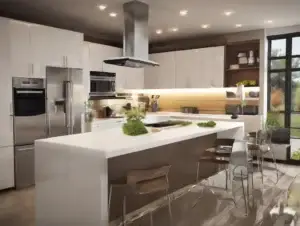
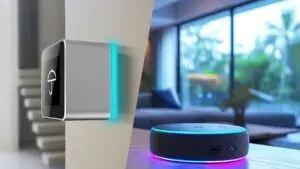
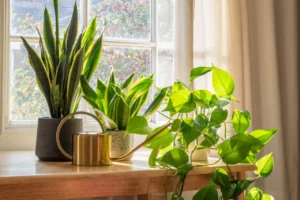
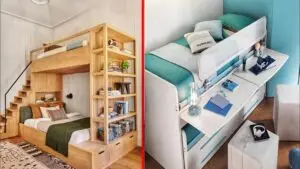
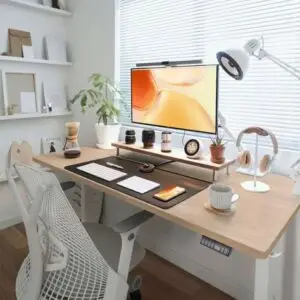

One thought on “The Complete Guide to Modern Kitchen Design (2025 Edition)”